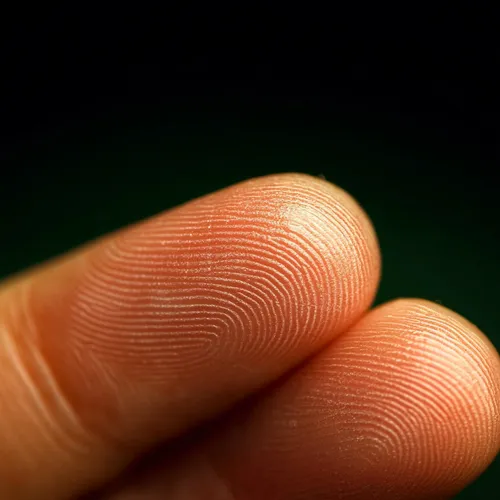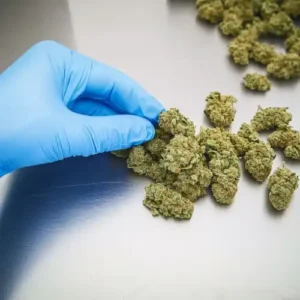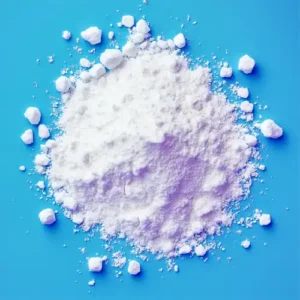If you are using cocaine, police can use your fingerprints to tell if you are positive for the drug in just seconds with new forensic tests that scientists in the Netherlands and the UK have developed.
Two different chemicals are produced by cocaine users as the drug is metabolised in their body and these chemicals are found in the sweat.
Researchers have created a unique kind of paper to take the fingerprints which are then used to uncover the metabolites with an accuracy of 99%. Even if you wash your hands it won’t stop detection.
Scientists at Surrey University developed the technique along with a private company Intelligent Fingerprinting and the Netherlands Forensic Institute. They believe that this technique can be used with other drugs.
The fingerprint test will allow police, prison officers etc. the ability to quickly tell if someone was using cocaine. This test is much faster than the ones available today.
This new fingerprint test is revolutionary for these workers and they can get results in real-time with a drug test that is non-invasive and will give definitive results in just a few minutes.
Researchers are already working on an even faster test that will have results in only 30-seconds.
The main benefits of the test are that it is hygienic, non-invasive and it can’t be faked. The sample itself captures the subject’s identity as well as the drug they were using.
Currently available cocaine drug testing kits require the user to give urine, blood or saliva. These substances have to be properly stored and disposed of as they are potential bio-hazards.
The “paper spray mass spectrometry” technique is becoming more popular in forensics because it is very sensitive and the testing system is very simple to set up.
This fingerprint test is now being used for the first time to detect drugs and the results of the technique are 99% effective for identifying cocaine in patients.
Approximately 2.7 million people used illegal drugs in 2015/16 as per the National Statistics Office and this represents about 8% of the total population.
Almost 2,500 people died in 2015 from drug misuse, which is up by 10% from the year before.
The journal Clinical Chemistry published this research in 2017.
Fingerprint Drug Test for Heroin
In 2019, University of Surrey researchers announced that they had now developed a fingerprint drug test for Heroin. The new test works in a similar way to the cocaine test that had been announced in 2017.
By trialling the test with volunteers, scientists were able to determine if a person had taken the drug. Or, if they had come into contact with the drug unidirectionally, perhaps by just shaking hands with a heroin user or dealer. In the trials, participants were asked to wash their hands thoroughly, before being asked to provide another fingerprint sample later. The test was still able to detect the drug if it had been used by the volunteers. This was despite them cleansing their hands with soap and water beforehand.
The test was performed on people that had taken the drug in the last 24 hours. It is unclear from the report how long the drug can be detected, using the new technology. The time scale in which heroin can be detected in your system varies depending on how you test.
Future Applications and Ethical Considerations
This groundbreaking fingerprint technology opens doors for rapid, non-invasive drug testing in various settings. Law enforcement could use it during traffic stops, employers might implement it for workplace safety, and healthcare providers could quickly screen patients. However, we must consider the ethical implications. How will this affect privacy rights? Could it lead to increased profiling or discrimination? There’s also the question of accuracy in real-world conditions. While lab results are promising, factors like environmental contamination could impact reliability. As we move forward, it’s crucial to balance the potential benefits with careful consideration of individual rights and social impact.
Using a urine test for heroin, the Class A drug can be detected for up to two weeks. A hair follicle test can detect traces of the drug within a 90 day period. The period within which the drug can be detected in saliva is a mere 48 hours.
Drugs on Your Fingertips
In 2018, Surrey researchers revealed that 1 in 10 people have cocaine or heroin on their fingerprints. An alarmingly high percentage of people had never used those drugs before. This was seen as an indication of just how pervasive drugs have become in modern society.
Photo: “Fingerprints” by Anthony Cunningham for Zoom Testing
This post was originally published in April 2017. It was last updated in August 2024.
Zoom Testing is a leading UK drug testing company and a supplier of Drug Test Kits.





